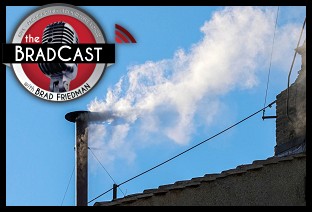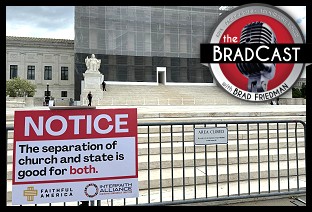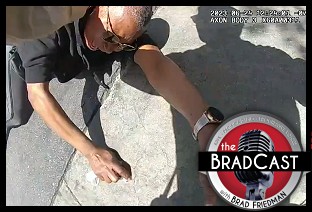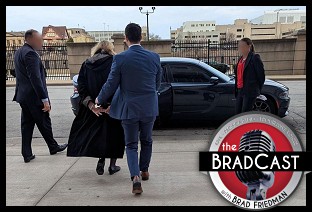 After performing an independent autopsy at the request of the Floyd family's attorney, Ben Crump, Dr. Michael Baden, the world-renowned former NY forensic pathologist and Dr. Allecia Wilson, the Univ. of Michigan Medical School's Director of Autopsy and Forensic Services, released an initial report, which found, in pertinent part, that George Floyd's death could be classified a "homicide caused by asphyxia due to neck and back compression that led to a lack of blood flow to the brain" [emphasis added].
After performing an independent autopsy at the request of the Floyd family's attorney, Ben Crump, Dr. Michael Baden, the world-renowned former NY forensic pathologist and Dr. Allecia Wilson, the Univ. of Michigan Medical School's Director of Autopsy and Forensic Services, released an initial report, which found, in pertinent part, that George Floyd's death could be classified a "homicide caused by asphyxia due to neck and back compression that led to a lack of blood flow to the brain" [emphasis added].
That finding, and additional observations, so sharply contrast with the initial findings of the Hennepin County Medical Examiner as to call into question the credibility of that public institution. The County Medical Examiner initially asserted that there were "no physical findings that support a diagnosis of traumatic asphyxia or strangulation." In a final report, the County Medical Examiner classified Floyd's death as a "homicide" but listed the cause of death as "cardiopulmonary arrest complicating law enforcement subdual [sic.], restraint, and neck compression."
Subsequent to the Hennepin County Medical Examiner's initial findings, set forth in the criminal complaint filed by the Hennepin County DA against former Minneapolis Police Officer Derek Chauvin --- the officer seen forcefully pressing his knee to Floyd's neck for nearly 9 minutes --- Governor Tim Walz, a member of the Democratic Farmer Labor Party, appointed the state's Attorney General, Keith Ellison, a former progressive Democratic Congressman, to take the lead role in Chauvin's prosecution.
Tuesday, while appearing on NBC's Today Show, Crump said he'd heard from prosecutors that they "expect to charge" the other officers who were present at the time of Floyd's death.
There are aspects of Baden and Wilson's findings that could support the filing of criminal charges against the two officers seen in a second video kneeling atop Floyd's back and lower torso while Chauvin had his knee pressed against Floyd's neck. However, a comment from Baden raises a doubt as to whether Ellison, as urged by Crump, could successfully prosecute Chauvin for first degree murder...
Conditions and Findings
An extended list of Baden's and Wilson's initial autopsy findings was furnished by Fox 47, to wit:
- Hemorrhage over the vertebral bodies and in the cervical region was found
- Hemorrhage on the outside of the carotid artery at the level of the C3, C4, C5 was found
- Hemorrhage in wrists and forearms was found
- Lungs not congested or infected
- No issues with the liver, spleen, intestines, kidneys
Findings Related to Cause of Death:
- He died of asphyxia due to neck and back pressure
- Pressure on the neck and back interfered with his breathing and blood flow to the brain
- Weight on the back, handcuffs and positioning were contributory factors because they impaired the ability to breathe
- George Floyd died at the scene
- No other obvious cause of death
- The cause of death is consistent with what we see on the video. No other cause of death is present in the autopsy
- Later information will not change cause of death, but will be informative
- The toxicology findings are helpful in understanding the circumstances of death but are not a cause or contributing cause of death.
- The independent autopsy finds that Floyd died of asphyxiation, as a direct result of the police officer's knee to his neck and the pressure placed on Floyd's back by two additional officers as he lay handcuffed on the ground.
Additional charges
Given the difficulties in bringing criminal charges against police officers under the "public duty doctrine," it is doubtful that AG Ellison could successful prosecute the one officer who failed to intervene as his three colleagues kept their knees pressed against Floyd's neck, back and lower torso. But the finding that "the pressure placed on Floyd's back by two additional officers" were "contributory factors because they impaired the ability to breathe" would likely support, at a minimum, the filing of the same 2nd degree manslaughter charge that has been filed against Chauvin. He was also charged with 3rd degree murder.
The MN 2nd Degree Manslaughter Statute applies when an individual's "negligence...creates an unreasonable risk," and the accused "consciously takes chances of causing death or great bodily harm to another."
Indeed, because it does not require intent to kill, a reasonable argument could be made that those two officers, like Chauvin, could be charged with 3rd degree murder pursuant to a MN Statute, which apples to "whoever, without intent to effect the death of any person, causes the death of another by perpetrating an act eminently dangerous to others and evincing a depraved mind, without regard for human life." [Emphasis added].
(CAVEAT: Unlike videos depicting Chauvin's knee steadily pressed against Floyd's neck for more than 8 minutes, the separate publicly released video depicting the knees of all three officers pressed against the neck, back and lower torso does not run for that length of time. It is quite possible that a nearly identical length of time might appear in police body cam videos, and, of course, Ellison's prosecutors will undoubtedly interview eye witnesses. Obviously, actual video documenting the time would be the most powerful piece of evidence.)
Dr. Baden, however, offered an observation that could be cited as forming a reasonable doubt that any of the three officers, including Chauvin, could successfully be prosecuted for 1st degree murder. An individual is guilty of 1st degree murder in Minnesota only with respect to an unlawful killing that is both willful and premeditated. Specifically, Baden noted that, when Floyd "said, 'I can't breathe'...many police are under the impression that if you can talk that means you're breathing. That's not true."
To secure a 1st degree murder conviction, Ellison would have to convince a jury beyond a reasonable doubt that one or more of these three officers understood that their continued weight on Floyd's neck, back and lower torso would cause his death. However, the length of time Chauvin's knee remained on Floyd's neck after he stopped all movement and stopped speaking altogether could potentially overcome the "I thought he was still breathing" defense.
UPDATE: AG Ellison's office filed an amended complaint[PDF]" which, in addition to the previous charges, alleged that Chauvin committed "2nd degree murder --- unintentional --- while committing a felony."
This allegation flows from what many jurisdictions refer to as the "felony murder rule" in which someone kills another person during the commission of another felony. Here, the amended complaint alleges that Chauvin killed Floyd while in the course of committing another felony, to wit: "assault in the third degree."
Per the amended complaint, the 2d degree murder charges flow, in part, from the fact that "police are trained that this type of restraint with the subject in a prone position is inherently dangerous."
Chauvin could face up to 40 years imprisonment if convicted of 2nd degree murder.
The other three officers present at the scene --- Thomas Lane and J. Alexander Kueng, who knelt on Floyd's back and lower torso, along with Tou Thao, who passively stood by watching --- were all charged with "aiding and abetting" 2nd degree murder and manslaughter with culpable negligence.
Three officers kneeling on Floyd video follows...
 Ernest A. Canning is a retired attorney, author, and Vietnam Veteran (4th Infantry, Central Highlands 1968). He previously served as a Senior Advisor to Veterans For Bernie. Canning has been a member of the California state bar since 1977. In addition to a juris doctor, he has received both undergraduate and graduate degrees in political science. Follow him on twitter: @cann4ing
Ernest A. Canning is a retired attorney, author, and Vietnam Veteran (4th Infantry, Central Highlands 1968). He previously served as a Senior Advisor to Veterans For Bernie. Canning has been a member of the California state bar since 1977. In addition to a juris doctor, he has received both undergraduate and graduate degrees in political science. Follow him on twitter: @cann4ing


 Sunday 'Now Hoarding' Toons
Sunday 'Now Hoarding' Toons Mad World:
Mad World: 'Green News Report' 5/15/25
'Green News Report' 5/15/25
 Plane Corruption and the Future of the DOJ: 'BradCast' 5/14/25
Plane Corruption and the Future of the DOJ: 'BradCast' 5/14/25 'Deeply Evil': GOP Proposes Largest Medicaid Cuts in History: 'BradCast' 5/13/25
'Deeply Evil': GOP Proposes Largest Medicaid Cuts in History: 'BradCast' 5/13/25 'Green News Report' 5/13/25
'Green News Report' 5/13/25 And Then They Came for the Mayors...: 'BradCast' 5/12/25
And Then They Came for the Mayors...: 'BradCast' 5/12/25 Sunday 'New Guy, Old Guy' Toons
Sunday 'New Guy, Old Guy' Toons Blowing Smoke. At the Vatican and White House: 'BradCast' 5/8/25
Blowing Smoke. At the Vatican and White House: 'BradCast' 5/8/25 'Green News Report' 5/8/25
'Green News Report' 5/8/25 SCOTUS Weighs Public Funding of Religious Schools: 'BradCast' 5/7/25
SCOTUS Weighs Public Funding of Religious Schools: 'BradCast' 5/7/25 Trump Judge Blocks NC GOP Theft of 2024 Supreme Court Seat: 'BradCast' 5/6/25
Trump Judge Blocks NC GOP Theft of 2024 Supreme Court Seat: 'BradCast' 5/6/25 Prosecutors Quit After U.S Attny Strikes Deal With Felon Cop: 'BradCast' 5/5/25
Prosecutors Quit After U.S Attny Strikes Deal With Felon Cop: 'BradCast' 5/5/25 Trump Losing Streak Continues into SECOND Hundred Days: 'BradCast' 5/1/25
Trump Losing Streak Continues into SECOND Hundred Days: 'BradCast' 5/1/25 100 Daze (w/ Digby and Driftglass): 'BradCast' 4/30/25
100 Daze (w/ Digby and Driftglass): 'BradCast' 4/30/25 Campaign to 'Impeach Trump Again' Gains Fresh Momentum: 'BradCast' 4/29/25
Campaign to 'Impeach Trump Again' Gains Fresh Momentum: 'BradCast' 4/29/25 And Then They Came for the Judges...: 'BradCast' 4/28/25
And Then They Came for the Judges...: 'BradCast' 4/28/25 Trump EPA Guts Enviro Justice Office: 'BradCast' 4/24/25
Trump EPA Guts Enviro Justice Office: 'BradCast' 4/24/25
 VA GOP VOTER REG FRAUDSTER OFF HOOK
VA GOP VOTER REG FRAUDSTER OFF HOOK Criminal GOP Voter Registration Fraud Probe Expanding in VA
Criminal GOP Voter Registration Fraud Probe Expanding in VA DOJ PROBE SOUGHT AFTER VA ARREST
DOJ PROBE SOUGHT AFTER VA ARREST Arrest in VA: GOP Voter Reg Scandal Widens
Arrest in VA: GOP Voter Reg Scandal Widens ALL TOGETHER: ROVE, SPROUL, KOCHS, RNC
ALL TOGETHER: ROVE, SPROUL, KOCHS, RNC LATimes: RNC's 'Fired' Sproul Working for Repubs in 'as Many as 30 States'
LATimes: RNC's 'Fired' Sproul Working for Repubs in 'as Many as 30 States' 'Fired' Sproul Group 'Cloned', Still Working for Republicans in At Least 10 States
'Fired' Sproul Group 'Cloned', Still Working for Republicans in At Least 10 States FINALLY: FOX ON GOP REG FRAUD SCANDAL
FINALLY: FOX ON GOP REG FRAUD SCANDAL COLORADO FOLLOWS FLORIDA WITH GOP CRIMINAL INVESTIGATION
COLORADO FOLLOWS FLORIDA WITH GOP CRIMINAL INVESTIGATION CRIMINAL PROBE LAUNCHED INTO GOP VOTER REGISTRATION FRAUD SCANDAL IN FL
CRIMINAL PROBE LAUNCHED INTO GOP VOTER REGISTRATION FRAUD SCANDAL IN FL Brad Breaks PA Photo ID & GOP Registration Fraud Scandal News on Hartmann TV
Brad Breaks PA Photo ID & GOP Registration Fraud Scandal News on Hartmann TV  CAUGHT ON TAPE: COORDINATED NATIONWIDE GOP VOTER REG SCAM
CAUGHT ON TAPE: COORDINATED NATIONWIDE GOP VOTER REG SCAM CRIMINAL ELECTION FRAUD COMPLAINT FILED AGAINST GOP 'FRAUD' FIRM
CRIMINAL ELECTION FRAUD COMPLAINT FILED AGAINST GOP 'FRAUD' FIRM RICK SCOTT GETS ROLLED IN GOP REGISTRATION FRAUD SCANDAL
RICK SCOTT GETS ROLLED IN GOP REGISTRATION FRAUD SCANDAL VIDEO: Brad Breaks GOP Reg Fraud Scandal on Hartmann TV
VIDEO: Brad Breaks GOP Reg Fraud Scandal on Hartmann TV RNC FIRES NATIONAL VOTER REGISTRATION FIRM FOR FRAUD
RNC FIRES NATIONAL VOTER REGISTRATION FIRM FOR FRAUD EXCLUSIVE: Intvw w/ FL Official Who First Discovered GOP Reg Fraud
EXCLUSIVE: Intvw w/ FL Official Who First Discovered GOP Reg Fraud GOP REGISTRATION FRAUD FOUND IN FL
GOP REGISTRATION FRAUD FOUND IN FL

































